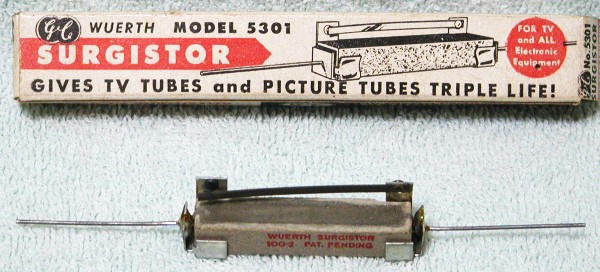Working as a patent attorney, I enjoy researching items like this because I don't have to.

Ahhh, of course, the busman's holiday. After I left research I did a fair bit of competitive analysis and research for attorneys, and wrote memos and briefs. (Most hired paralegals and researchers do to the actual work.) It's a lot nicer to perform research when no deadline exists and nobody will be upset because the giant killer either was found or couldn't be found.
Using today's patent criteria, these inventions might not be patentable. But considering how inventions and patents used to be viewed, these inventions were properly patented. The patent claims are narrow and specific. The patents reference the B+ delay circuits as prior art, but those patents were also narrowly focused and gave no hint that ramping up the filament temperature was desirable.
Yeah, ok, sure, but I have patents and papers going back to the 1920s and 1930s on this idea. Weurth didn't cite that prior art and neither did the examiner. Probably because it was hard to find those papers in dozens of different hobbyist and trade magazines, or look up the dozen patents in the records. Barbie says, "
Research is Hard!" Particularly when it's all on paper and the Memex is fifty years away.
Over the past few years I've been writing up a monograph on the history of the idea, so I have an unfair research advantage here.

Examiners in those days were often not as knowledgeable as they should have been. One of the biggest botches was the transistor patents. In retrospect we can see these never should have been granted. Between Losev, Lilienfeld, and Heil it had all been published or patented, and Bardeen and Brattain knew of that work. So did Shockley, who had replicated Lilienfeld's work, subsequently lied about it, and was caught. Plus the crucial contributions of Gibney, Ohl, and Scaff were omitted, which makes the patent vulnerable as the purported inventors weren't. We now have their recollections in the record about who did what, and, most important of all, who didn't do what. In consequence the attorney should have been disbarred because he very likely knew of the shenanigans. Anyway, the first round of patents was denied, and they had to scramble to get something issued. Such a mess. But that was Shockley. Man couldn't tell the truth about anything. As the mafia saying goes, a fish rots from the head down.
Anyway, in hindsight we can see how Shockley was a patent troll, perjurer, and plagiarist. It was not so clear at the time.
Back in the day, patents narrowly described only a single invention that was generally implemented in a single product. Not today. Now we write patent applications with broad descriptions that cover every possible variation and configuration. Even though today's patent claims are typically narrow in scope, the disclosure is so broad that most related inventions are rendered unpatentable.
Sure, I am well familiar with being as broad as possible. (I hold a few US and European patents, which I wrote, and I've been involved with other applications.)
The other trick back in the day was to delay patents as long as possible, constantly tinkering with them as technology caught up to a bogus patent. That was how Jerome Lemelson made his money: as a patent troll. Here's one example:
















